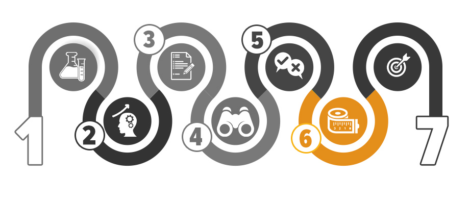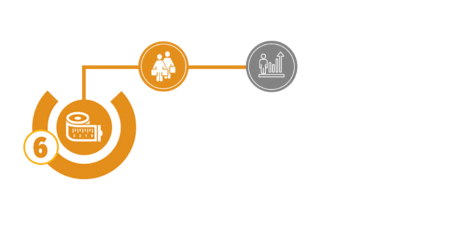Location market research for retail businesses
Published on 18 May 2018Discover the steps to follow to ask yourself the right question to conduct your market research before creating a business. You can read our initial advice on this blog and download the complete guide in .pdf format
Episode #7/9 – If you are planning to open a physical retail outlet (i.e. a shop), nothing could be more important than its location. This is the purpose of step 12 of market research that we are going to tackle today.“Location, location, location” is what the real estate agents say to better highlight the all-important choice of where to set up your business in relation to all the other variables. Do not skip over this analysis, because it will allow you, among other things, to check the potential of your catchment area and the balance between the customers you will find inside the area and the market segment you are targeting.
Step A: Counting flows
Location analysis will initially be based on a study of the flows of passers-by. This is particularly important in cases in which the catchment area is quite contained (food outlets for example: restaurants, takeaways…).
Studying flows consists of counting the numbers of people who pass by your point of sale and evaluating the capture rate, in other words the percentage of those people entering your shop. This is why the busiest thoroughfares in big cities command the highest rents, because their turnover will be directly related to the flows of passers-by.
For businesses in the field of HoReCa / HRC, we generally carry out measurements during uninterrupted periods of 3 hours (for example 11.30am-2.30pm for customers eating lunch) over 7 days. In particular we monitor events that can have an influence on the numbers (weather, school holidays…).
Step B: qualifying flows
But analysing flows is not simply a matter of counting. You also have the opportunity to observe passers-by and thereby determine whether they correspond to the type of customer you want to target.
In a study conducted in a European capital for a point of sale targeting 12-25 year olds, we rapidly realised that the chosen location did indeed attract a lot of people, but that only a very small proportion of the passers-by matched the desired target group. This explained the poor results of the point of sale and confirmed the importance of doing a new business location study before signing a lease.
Step C: analysing the flows of passers-by
Analysing flows is one of the market research methods that involves both qualitative and quantitative methods.
When you count the numbers of passers-by and recreate flow diagrams corresponding to the time of day (we recommend that you convert your count every 15 minutes), you are performing a quantitative analysis.
If you observe the passers-by and classify them, you are also carrying out a qualitative analysis.
Non-participative observation techniques fall under the heading of ethnography. Using them you can easily classify passers-by in terms of age and other criteria that may be more or less difficult to determine (for example, in a 2017 study carried out for a HoReCa business, we succeeded in distinguishing tourists from people living in the area).
Represent the flows on a graph (Microsoft Excel has the perfect tool for this) in order to explore the data in a visual manner. Ask yourself the following questions:
- Is the number of customers passing by my point of sale sufficient to generate the expected turnover?
- Is the flow of passers-by different from one side of the street to the other? Does sunlight play a part in these differences?
- Does the flow of passers-by move in one direction? Do passers-by notice your shop? (Some locations, at the entrance to shopping centres for example, or on a side street, can be particularly unfortunate, because they have poor visibility if passers-by are mainly moving in a direction which causes them to turn their back to the shop window.)
- What eventual influence can public transport stops or street furniture have on the flow of passers-by?
Read our next article about quantitative market research
In our next article (episode 8), we will be looking at a subject that is often poorly and insufficiently handled: that of quantitative studies.
Quantitative market research often constitutes “poor man’s market research”.
We will try to explain how to do it out properly, and the preventive measures to take to avoid messing it up.


